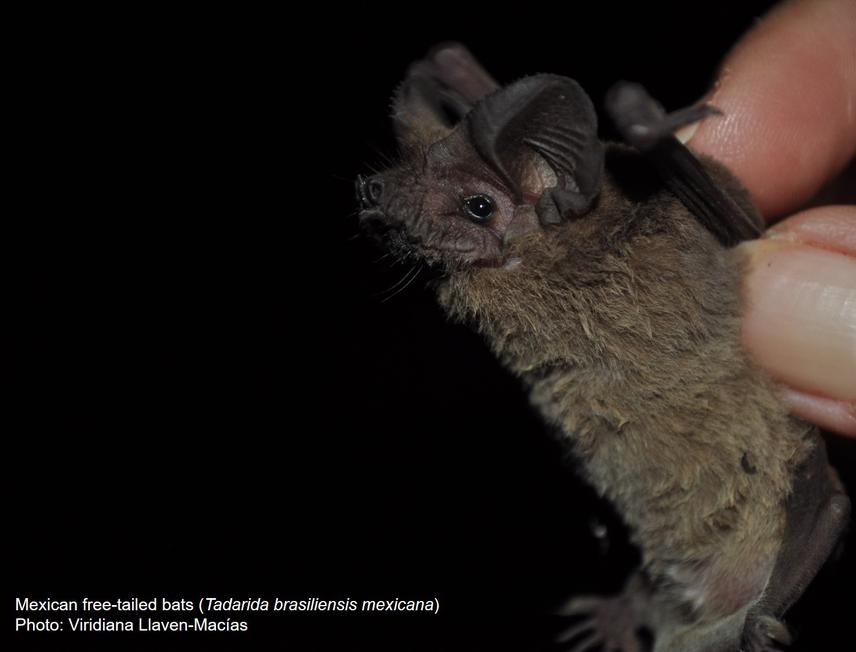Social media video featuring the project.
Emergence of Tadarida
30 Apr 2018 La Trinitaria, Mexico, Central and Latin America Mammals | Bats
The current migration hypothesis proposes that Mexican free-tailed bats (Tadarida brasiliensis mexicana) overwinter in central Mexico. However, there is a void of information available and published regarding its population dynamics in southern Mexico, which contributes to the knowledge of the migration of the species. Apparently, the Mexican free-tailed bat remains throughout the year in the San Francisco Cave (CSF), with monthly variations in its dynamic population (ranging from 100 to thousands of bats). It´s important to evaluate if this variation could help to recognize more than one population group of T. b. mexicana in the CSF, differentiated in their migratory behavior (migratory or non-migratory), through the analysis of their genetic-phenotypic variability, and population dynamics. These bats have great economic-ecological importance, but could be affected by the alteration in the CSF. It´s necessary to lay the foundations that contribute to the conservation of T. b. mexicana and the other local biodiversity.

Mexican free-tailed bat, Tadarida brasiliensis mexicana.©Viridiana Llaven Macias.
The main objective of the present investigation is to evaluate if T. b. mexicana is conformed by more than one population group in the Cueva San Francisco (CSF), differentiated by its migratory behaviour; and determined from the specific objectives:
1) estimate the diversity and genetic structure of T. b. mexicana in the CSF,
2) analyze if the individuals of T. b. mexicana differ significantly in key phenotypic characters, which could predict its migratory behaviour,
3) identify genetic and phenotypic groups of T. b. mexicana in the CSF;
4) monthly estimate the size and population structure of T. b. mexicana in the CSF.
Monthly sampling (ten sampling nights per month) from July 2018 to June 2020 at the CSF will be carried out. At the entrance to the cave, three mist nets (10 x 3 m) will be placed for the capture of Mexican free-tailed bats. Each bat will be weighed (to consider the body mass), it will measure the forearm, humero and the phalanges of third and fifth finger, from which some measures related to the wing morphology will be estimated (wingspan, index of the area of wing, wing load index and wing aspect ratio). Each bat will be taken a small biopsy (3 mm diameter) of the wing membrane, for later genetic studies (diversity and genetic structure, genealogical relationships, allocation of individuals to predetermined genetic groups) and to mark the bats from a designed code (based on the position of the biopsy on each wing).
Of the bats captured in the mist net, the structure of the population will be estimated, determined by sex, age and reproductive status. The population size will be estimated from the analysis of the thermal images obtained from the video records of the emergence of the bats in the CSF.
In addition, environmental education workshops (schools and public in general) will be made. The workshops will be held with the objective of raising awareness among people about the importance of the conservation of bats and their habitat, and so that together it will be proposed preventive measures for a better use of the CSF.
Social media video featuring the project.
Emergence of Tadarida